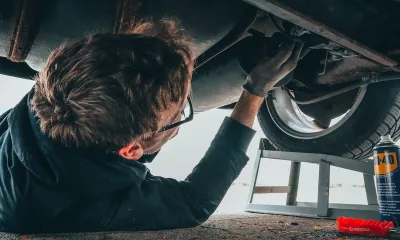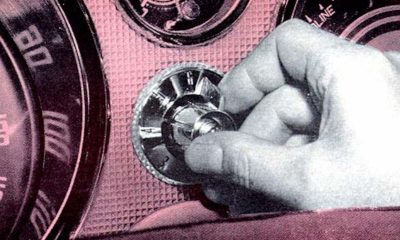THE PRESENT
A recent article in the New Yorker claims “every three kilometres the average driver makes 400 observations, 40 decisions and one mistake. Once every 800 kilometres, one of those mistakes leads to a near-collision. Once every 100 000 kilometres one of those mistakes leads to a crash.”
In other words, when people drive, mistakes are endemic and accidents inevitable. Your own driving profile may be a lot different, but the message is clear.
Twenty years ago, the average driver would not have been able to make an emergency stop, go too fast through a corner, or suffer a sudden loss of tyre pressure without losing control. At present, ABS brakes, ESP control systems and runflat tyres have made it possible for all three events to have happy endings.
In addition, the rigid body/frame construction of older vehicles resulted in the occupants being forced against the facia or steering wheel with a deceleration of about 30 g during an accident. At present, the controlled crushability of bodies has slowed down these deceleration values to not more than l0 g, and airbags have provided a softer landing.
These wonderful inventions have saved at least 14 000 lives in the USA since their introduction, but the latest crop of safety items are not likely to add significantly to the safety of future vehicles.
This is because the law of diminishing returns has now kicked in, so that fancy gizmos that help the driver to see or judge better will only have a minor effect on the death toll.
In any event, these devices will only bear fruit if drivers are more awake and more safety conscious. This aim can only be achieved by making comprehensive training schemes compulsory. Up to now, no government has been prepared to do that.
RESEARCHING THE ACCIDENT
The car of the future is being planned right now. Many automotive companies have accident research departments that employ engineers, biomechanics and medical doctors to examine accidents involving their vehicles in order to better understand exactly what happens during the many different kinds of accidents that can occur.
One of the recent results of this research shows that it’s very likely that falling asleep at the wheel is an even bigger cause of accidents than drunk driving, especially at night. I tend to agree because I fell asleep at the wheel (in my youth!) and the scary part is that there are no degrees of drowsiness. You’re either drowsy or you pass out!
Crash data retrieval recorders have been employed for a number of years by most manufacturers. These units “wake up” when severe deceleration occurs and start recording deceleration values and airbag activity.
Modern versions even record whether the seatbelts were buckled, whether there were diagnostic trouble codes present in the CPU before the crash, how long the brakes were activated, the engine torque value just before the accident occurred, as well as the steering angle and any directional speed changes.
The unit is powered by a capacitor, just like the airbag control, so if the battery is destroyed in the accident it will still function for long enough to record valuable data.
This information is often vital. For example, drivers often claim that an airbag deployed for no reason, but the recorder will show a severe deceleration. The driver, whose life has been saved by the airbag, often does not remember the impact because loss of memory is very common after an accident.
NEW DEVICES
Sensors that detect people under the influence of drink or drugs and warn when drivers are getting drowsy are now becoming available.
The Mercedes-Benz system is called Attention Assist, and detects the driver’s typical behaviour patterns each time the car is driven, then uses this information to give a visible and aural warning when the pattern changes.
The company’s lane departure system uses cameras to detect a gradual drift to one side. In this case a steering wheel vibration warns the driver. These cameras also warn if there is a vehicle in the driver’s blind zone.
Some of the top brands now offer infra-red cameras that capture the road ahead to improve night vision. A small screen on the facia shows a very clear image that can be used instead of the headlights. This is especially useful when your normal vision is blinded by oncoming traffic.
Smart airbags that deploy according to the severity of the accident, or the mass of the occupant, are now being joined by presafe systems that detect the possibility of an accident some milliseconds before impact and pre-tension the seatbelts and prime the airbags.
THE FUTURE
The car of the future will be jampacked with even more safety features. Volvo intends to introduce an injury-proof car by 2020.
It will find out about the road ahead from an “electronic bumper” that can gather information all around itself for hundreds of metres in all directions.
Even if the driver freezes in panic, the vehicle will take over and be able to steer and brake automatically to avoid an accident. It is claimed that a reduction of as little as 10 km/h in the pre-collision speed will have a dramatic effect on injuries. Other manufacturers are working towards the same goal.
I often get asked “what is the safest car on the road?” My answer is the only one possible: “tell me exactly what kind of accident you’re going to have, and I’ll tell you which kind of car to buy.”
THE ANATOMY OF AN ACCIDENT
How do the sensors in a car experience a crash? This reconstruction, by Ford engineers, lists the sequence of events when the driver’s door on a Falcon is struck by another vehicle travelling at 50 km/h.
0 milliseconds – an external object touches the door.
1 ms – the door’s pressure sensor detects a pressure wave.
2 ms – an accelerometer in the C-pillar behind the rear door also detects a highpressure
wave.
2,5 ms – an accelerometer in the car’s centre detects crash vibrations.
5 ms – the crash processing unit (CPU) starts to check for the significance of the
three inputs. For example, if the impact was light, nothing further would happen,
but if the vibrations were severe, some of the the airbags would have to be activated.
The door intrusion structure begins to absorb energy.
6,5 ms – the door pressure sensor registers peak pressure.
7 ms – the CPU confirms the crash was serious and calculates what actions to take.
8 ms – the CPU sends a signal to the side airbag’s pyrotechnic unit to “fire”. The
B-pillar begins to crumple inwards and energy begins to transfer into the acrossthe-
car load path beneath the rear seat.
8,5 ms – the side airbag system fires.
15 ms – the roof begins to absorb part of the impact. The airbag bursts through
the seat foam and begins to inflate.
17 ms – the across-the-car load path and structure under the rear seat reach
maximum load. The airbag covers the occupant’s chest and begins to push his/
her shoulder away from the impact zone.
20 ms – the door and B-pillar begin to push on the front seat. The airbag begins to
push the occupant’s chest away from the impact.
27 ms – the vehicle impact velocity has changed from 50 to 23,5 km/h. A pusherblock
in the seat moves the occupant’s pelvis away from the impact zone. The
airbag starts controlled deflation.
30 ms – the Falcon has absorbed all the crash energy and the airbag remains in
place. For a brief moment, the occupant experiences a maximum force equal to
12 g. (12 times the acceleration due to gravity).
45 ms – occupant and airbag move together with the deforming side structure.
50 ms – the CPU unlocks the car’s doors. The passenger safety cell begins to
rebound, pushing the doors away from the occupant.
70 ms – the airbag continues to deflate. The occupant moves back towards the
middle of the car. Engineers classify the crash as complete.
150 to 300 ms – the occupant becomes aware of the collision.
NOTE: an eye blink is completed in about 100 ms, and there is evidence that human awareness of any event only sets in after about 300 ms. Seatbelts are not mentioned in the above description because a side impact would most likely not lead to a seatbelt tightening requirement.






